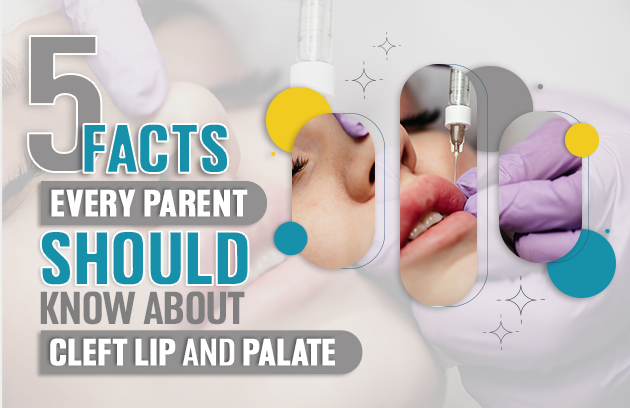- December 8, 2023
- admin
- Comment: 0
- blog, Cleft lip and palate
Bringing a child into the world is an incredible journey, filled with joy, hope, and occasional challenges. Among the potential challenges, discovering that your new-born has a cleft lip or palate can be overwhelming for any parent. Understanding the condition, its implications, and available treatments is crucial for navigating this journey with confidence and informed decisions.
Here are five essential facts every parent should know about cleft lip and palate:
Prevalence and Causes
Cleft lip and palate are among the most common birth defects worldwide, occurring in approximately 1 in 700 births. These conditions arise during early pregnancy when the facial structures fail to close properly. Genetic factors, environmental influences, or a combination of both may contribute to their occurrence.
Variations in Severity
Clefts can vary in their extent and severity. A cleft lip might range from a small notch to a complete separation of the lip extending into the nose. Similarly, a cleft palate can manifest as a small opening at the back of the mouth or a large opening that extends into the nasal cavity. The severity impacts feeding, speech, dental health, and overall facial appearance.
Challenges and Associated Health Issues
Beyond the visible facial differences, children with clefts may encounter various challenges. Difficulties in feeding due to sucking problems or nasal regurgitation can be initial concerns. Speech development might also be affected, leading to speech impediments. Additionally, clefts can predispose children to ear infections and dental problems, demanding extra care and attention.
Comprehensive Treatment Approach
Addressing cleft lip and palate involves a multidisciplinary team consisting of paediatricians, surgeons, speech therapists, dentists, and other specialists. Surgery to repair the clefts is often performed within the first year of life. Multiple surgeries might be necessary as the child grows to improve appearance and function. Speech therapy, orthodontic care, and counselling are crucial components of comprehensive treatment plans.
Emotional Support and Community Involvement
Raising a child with a cleft involves not just physical care but also emotional support. Parents might encounter feelings of guilt, worry, or uncertainty. Engaging with support groups, connecting with other families experiencing similar challenges, and seeking guidance from healthcare professionals can provide valuable emotional support. Remember, a cleft does not define a child; with proper care and support, they can lead fulfilling lives.
Conclusion:
Understanding the nuances of cleft lip and palate is pivotal for parents faced with this diagnosis. While it presents challenges, it’s essential to approach this journey with knowledge, support, and a proactive mind-set. With comprehensive care, love, and encouragement, children born with cleft lip and palate can thrive and achieve their full potential. Being informed empowers parents to make informed decisions and offer the best possible care for their child.
Remember, every child is unique, and with proper medical attention and emotional support, they can overcome the challenges associated with cleft lip and palate, leading fulfilling lives filled with love and opportunities.

